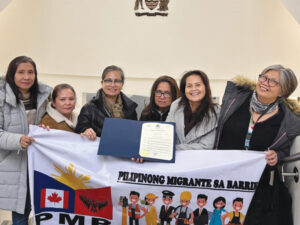B.C. organizations collaborate on industry-leading food waste reduction process
Vancouver, B.C. – Western Canada’s largest home-grown grocery chain, Save-On-Foods, has surpassed its company-wide goal of cutting its food waste in half by the year 2025 – a goal it announced only six months ago.
In collaboration with B.C.-based organizations FoodMesh and Loop Resource and in partnership with Food Banks BC and other charity partners across the country, 86 Save-On-Foods stores – more than half of all its locations – are now diverting 100 per cent of their unsalable perishable food from landfills. The company is in the process of scaling its 100 per cent food waste diversion process to another 35 stores, which will be food waste-free by the end of the year.
Today, Save-On-Foods is rolling out the next food waste diversion hub in Maple Ridge, B.C., which will also provide food waste diversion services for locations in the neighbouring cities of Mission and Pitt Meadows.
Since reaching the 50 per cent reduction target announced in January, the company has revised its goal to become a zero-food waste operation within 3 years.
“We started the ball rolling on diverting our surplus food from landfills with a single store in February of 2018, and from there, worked on three simultaneous pilot projects in collaboration with Food Mesh, Loop Resources, and members of Food Banks BC to ensure we had a scalable and sustainable solution that allowed us to confidently state our first target,” said Darrell Jones, president of Save-On-Foods.
“Since then, we’ve rolled this out to the point that more than half of all our stores diverting 100 per cent of their perishables, 100 per cent of the time. This solution was grown here in British Columbia, and we are confident it will work across the country. We have created a process that can track and measure surplus food and how it’s put to better and higher uses. This is a great first step in our ultimate goal of being a zero-waste company, and we are able to leverage the insights from the process to help us reduce surplus and potentially wasted food in the first place.”
Food that’s unsalable but perfectly safe to consume is diverted to food banks and other participating non-profit organizations, while other food not safe for human consumption is provided to family farms for animal feed and compost. Through these partnerships, Save-On-Foods has provided more than 500,000 free meals to families in need across Western Canada since the beginning of the year.








